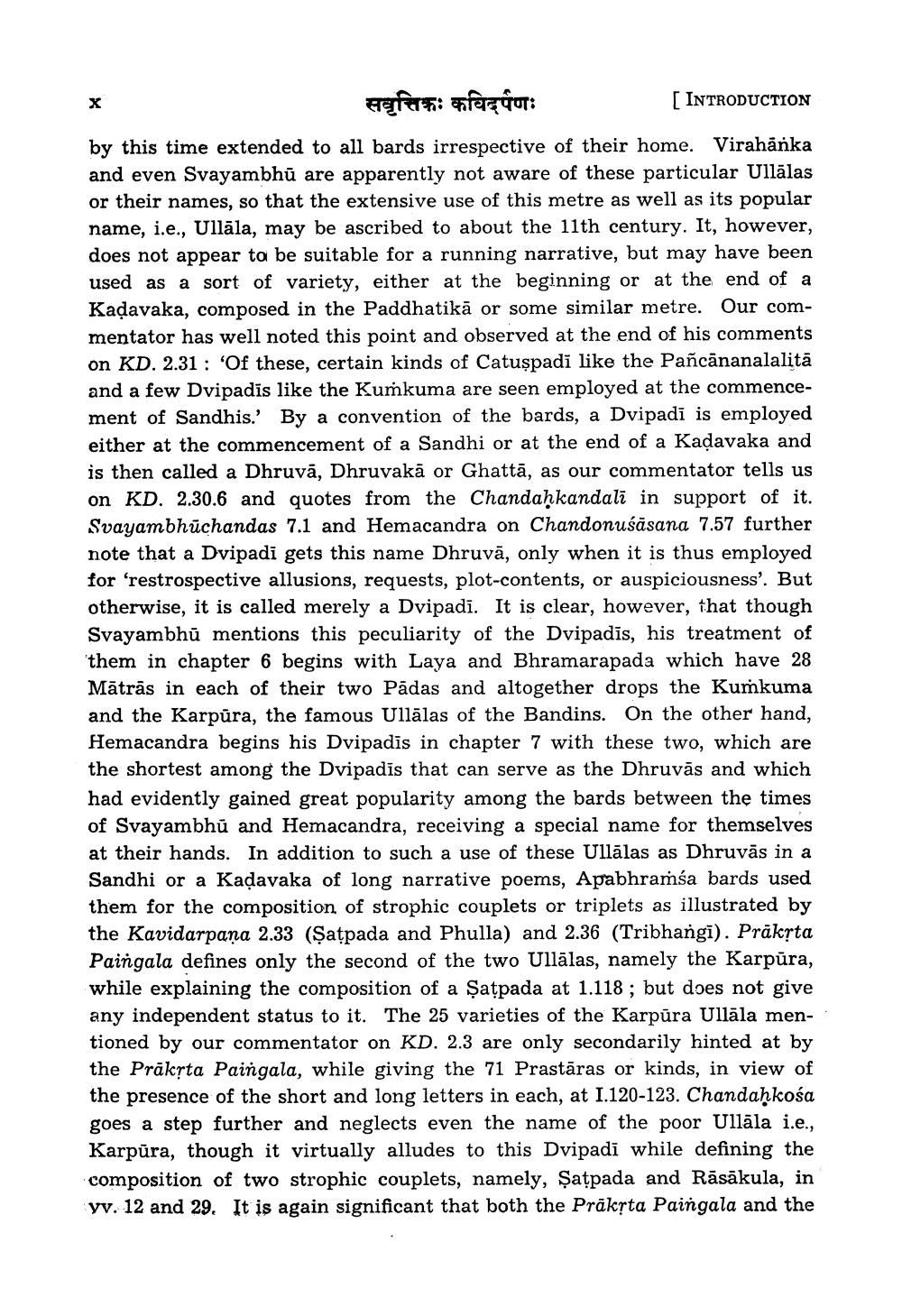________________
सवृत्तिकः कविदर्पणः
[ INTRODUCTION
by this time extended to all bards irrespective of their home. Virahanka and even Svayambhū are apparently not aware of these particular Ullalas or their names, so that the extensive use of this metre as well as its popular name, i.e., Ullāla, may be ascribed to about the 11th century. It, however, does not appear to be suitable for a running narrative, but may have been used as a sort of variety, either at the beginning or at the end of a Kadavaka, composed in the Paddhatikā or some similar metre. Our commentator has well noted this point and observed at the end of his comments on KD. 2.31 : 'Of these, certain kinds of Catușpadī like the Pañcānanalalitā and a few Dvipadis like the Kumkuma are seen employed at the commencement of Sandhis.' By a convention of the bards, a Dvipadi is employed either at the commencement of a Sandhi or at the end of a Kadavaka and is then called a Dhruvā, Dhruvakā or Ghattā, as our commentator tells us on KD. 2.30.6 and quotes from the Chandahkandali in support of it. Svayambhūchandas 7.1 and Hemacandra on Chandonusāsana 7.57 further note that a Dvipadi gets this name Dhruvā, only when it is thus employed for 'restrospective allusions, requests, plot-contents, or auspiciousness'. But otherwise, it is called merely a Dvipadī. It is clear, however, that though Svayambhū mentions this peculiarity of the Dvipadīs, his treatment of them in chapter 6 begins with Laya and Bhramarapada which have 28 Mātrās in each of their two Pādas and altogether drops the Kurkuma and the Karpūra, the famous Ullālas of the Bandins. On the other hand, Hemacandra begins his Dvipadis in chapter 7 with these two, which are the shortest among the Dvipadīs that can serve as the Dhruvās and which had evidently gained great popularity among the bards between the times of Svayambhū and Hemacandra, receiving a special name for themselves at their hands. In addition to such a use of these Ullālas as Dhruvās in a Sandhi or a Kadavaka of long narrative poems, Apabhramśa bards used them for the composition of strophic couplets or triplets as illustrated by the Kavidarpana 2.33 (Satpada and Phulla) and 2.36 (Tribhangi). Prakrta Paingala defines only the second of the two Ullālas, namely the Karpūra, while explaining the composition of a șațpada at 1.118; but does not give any independent status to it. The 25 varieties of the Karpūra Ullāla mentioned by our commentator on KD. 2.3 are only secondarily hinted at by the Prāksta Paingala, while giving the 71 Prastāras or kinds, in view of the presence of the short and long letters in each, at 1.120-123. Chandaħkośa goes a step further and neglects even the name of the poor Ullāla i.e., Karpūra, though it virtually alludes to this Dvipadi while defining the composition of two strophic couplets, namely, Şatpada and Rāsākula, in yv. 12 and 29. It is again significant that both the Präkrta Paingala and the




